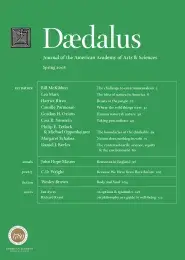Beasts in the jungle (or wherever)
When Byron wrote that “the Assyrian came down like the wolf on the fold” (“The Destruction of Sennacherib,” 1815), his audience had no trouble understanding the simile or feeling its force, even though wolves had not threatened most British flocks since the Wars of the Roses. Almost two centuries later, expressions such as “the wolf is at the door” remain evocative, although the Anglophone experience of wolves has diminished still further. For most of us, they are only to be encountered (if at all) in zoos or in establishments like Wolf Hollow.
Located in Ipswich, just north of Boston, Wolf Hollow is the home of a pack of gray wolves who live a sheltered suburban existence behind a high chain-link fence. Their captivity has modified their nomadic habits and their fierce independent dispositions. (The pack was established twenty years ago with pups, so that only inherent inclinations, and not confirmed behaviors, needed to be modified.) Their relationship with their caretakers seems affectionate and playful, sometimes even engagingly doglike–so much so that visitors need to be warned that it would be very dangerous for strangers to presume on this superficial affability. The animals themselves give occasional indications that they retain the capacities of their free-roaming relatives–that though apparently reconciled to confinement, they are far from tame. When large, loud vehicles rumble past on nearby Route 133, the wolves tend to howl. And despite their secure enclosure within the built-up landscape of North American sprawl, their calls evoke the eerie menace that has immemorially echoed through the wild woods of fairy tale and fable.
The symbolic resonance of large ferocious wild animals–the traditional representatives of what seems most threatening about the natural world–has proved much more durable than their physical presence. Indeed, their absence has often had equal and opposite figurative force. The extermination of wolves in Great Britain, along with such other unruly creatures as bears and wild boars, was routinely adduced as evidence of the triumph of insular (as opposed to continental) civilization in the early modern period. As they dispersed around the globe, British settlers and colonizers set themselves parallel physical and metaphorical challenges, conflating the elimination of dangerous animals with the imposition of political and military order. In North America, hunters could claim bounties for killing wolves from the seventeenth century into the twentieth, although by the latter period wolves had abandoned most of their historic range, persisting only in remote mountains, forests, and tundras. In Africa and (especially) Asia, imperial officials celebrated the “extermination of wild beasts” as one of “the undoubted advantages . . . derived from British rule.”1
. . .
